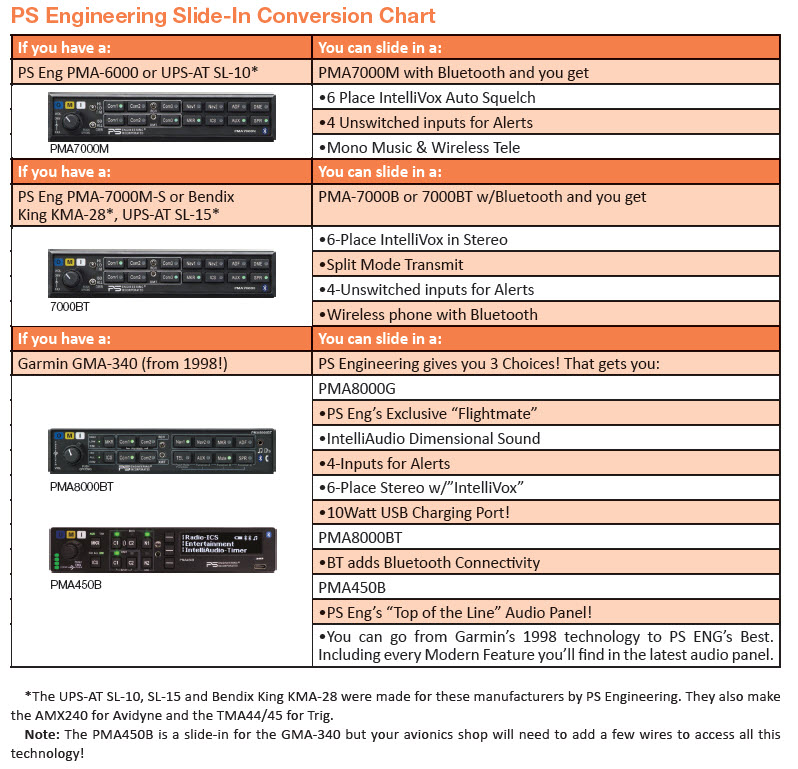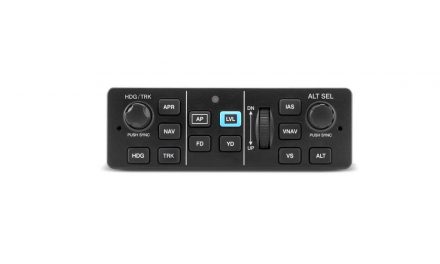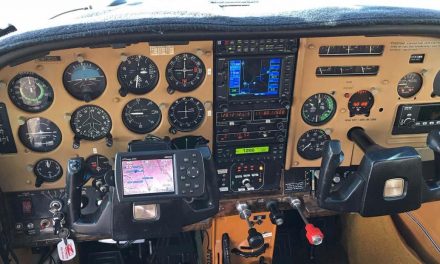Why you should consider a direct slide-in replacement for your airplane instead of an avionics overhaul
Upgrading and updating avionics in a legacy aircraft can get expensive in a hurry. You start with a wish list of the avionics you would like to add to your aircraft and then, with the help of a consultant like myself or with your own calculator, find yourself choosing between the things you want and the things you need. As I have mentioned before, it almost always requires compromise!
It’s safe to say that the money you spend on updated equipment, whether it be an audio panel/intercom, integrated navigator, or navcom and transponder will go directly into enhancing the capability of your aircraft. However, the labor to install this equipment (the money you spend to get it installed) benefits the avionics shop and, while necessary, doesn’t add to the capability of the aircraft, it only adds to the bill! Therefore putting more money into equipment and less into labor costs just makes sense — when possible. The way you can do this is by looking at slide-in solutions!
Before the Slide-Ins
Over the years, I’ve seen manufacturers come to market with upgrades to their own products that required a whole new install.
Bendix King (BK): The KX-155 was introduced around 1984 and went on to be the dominant navcom through the ’80s and ’90s — frankly there are still thousands of KX-155s in GA aircraft today. The radio in 1984 was basic by today’s standards and is showing its age today. In 1998, Bendix King introduced the KX-155A, an improved navcom with a better display (a major issue for KX-155s today) and enhanced features like memory storage and digital RMI. However, BK introduced the radio in 28-volt-only versions, which required a completely new install. It never came to market with a 14-volt version (which represents the bulk of the GA fleet).
At that time, Garmin had just come to market with the GNS-430. Shortly after, UPS-AT came out with the SL-30 digital navcom, and the KX-155’s relative effectiveness was impacted again.
In 2007, way before the Avidyne expansion, BK introduced its “Garmin GNS alternative,” the KN-770 integrated navigator. We (Eastern Avionics) had our booth at Oshkosh directly opposite Bendix King. The BK people showed us the KN-770, which frankly offered some enhanced features vs. the Garmin 530 — its screen quality alone was a big deal for me. So I suggested that they make it rack-and-pin compatible as a direct replacement for the 530. “What a great idea!” was the response from the BK staff! Well, as you probably know, that message never made it to engineering, and what could have been a big deal for Bendix King went nowhere.
Garmin: It’s hard to understand why the Garmin GTN series, the GTN-650 and GTN-750, was not designed as a direct slide-in replacement for the 430/530. Requiring a new installation for a GNS-430/530 owner to upgrade to a GTN-650/750 adds about $3,700 of installation cost (40 hours) to the equation. As we know, other manufacturers figured it out.
Members: Read the article with its images, and a PS Engineering slide-in conversion chart, here.
Slide-In Solutions
Four companies are offering slide-in upgrade solutions for the GA legacy aircraft owner. TKM Avionics has made a living of it. PS Engineering, always the innovator, offers slide-in upgrade paths for some early audio-panel models, Trig Avionics offers a slide-in ADS-B solution, and Avidyne, well — its decision to offer a slide-in option to Garmin customers has proven to be a winner. Let’s take a look (in alphabetical order).
Avidyne: To jump into the fray vs. Garmin for the lucrative integrated navigator market and compete against the likes of the GTN-650 and 750, Avidyne needed an angle, and I can’t think of a better one than making its new IFD440, 540, and 550 (with AHRS) tray- and pin-compatible with Garmin’s previous GNS-430 and 530 models. Since the average install on one of these is 40 hours, sliding an IFD440 or 540 into a previous Garmin installation saves the aircraft owner close to $4,000 (at $92 per hour average rate), plus the usual miscellaneous parts. If that’s not a reason to take a serious look at Avidyne, consider that’s about what you need to add a Mode S ES transponder and meet the ADS-B mandate. Here’s link to Avidyne’s IFD440 to GTN-650 Comparison: https://www.avidyne.com/landing/ifd540/440-650-compare.asp
PS Engineering (PS): If you’ve followed my articles, you know that PS is responsible for most of the technology that we see in today’s sophisticated audio panels. You also know I’m a big fan! This was the company that first introduced the integrated audio panel with intercom and it’s responsible for most of the innovations that came later.
In the last couple of years, PS Engineering has also been developing a line of slide-in units that allow you to upgrade your earlier model audio panel to include these new features without the expense of a full new installation. For perspective, adding a new audio panel requires about 16 to 24 hours ($1,500 to $2,300) of install time depending on the sophistication of your avionics panel. The labor cost on a new audio panel frequently exceeds the cost of the unit! Consider these slide-in upgrade paths available from PS Engineering:
It would be impossible to explain all the PS Engineering features you will find in these audio panels so here’s the link: http://www.ps-engineering.com/index.shtml
TKM Avionics: As I mentioned earlier, TKM has made a living saving legacy aircraft owners money on their navcom upgrades. TKM offers six models, all TSO’d, that allow you as aircraft owner to upgrade your radios — some as old as 50 years — to modern technology, all without an avionics shop. The latest addition is the new MX155, a slide-in replacement for the venerable but aging KX-155.
The MX155, like the earlier UPSAT SL-30 and Garmin’s current GNC-255A is a digital navcom with state-of-the-art features. Here’s a link to all the TKM slide-in options: http://tkmavionics.com/
Note: While you’re visiting the TKM website, check out the article I wrote about TKM back in 2015 or check the archives for “Evolution of the Navcom.”
Trig Avionics: Mode S ES Transponders are getting a lot of discussion these days with the ADS-B mandate approaching. With all the players vying for your ADS-B dollars, it would be easy to forget that Trig Avionics in Scotland was the first manufacturer to offer a certified ADS-B compliant Mode S/ES transponder, first in Europe and later in the US. It’s safe to say that Bendix King’s KT-76A used to be the most popular standard transponder and, like the KX-155 navcom, there are still thousands in legacy aircraft. Wouldn’t it therefore be smart to offer a slide-in solution for the KT-76A? Wouldn’t it be even smarter to make it ADS-B compliant?
That’s the genius in the thinking behind Trig’s TT31 Mode S/ES transponder, which is a direct slide-in solution for your old KT-76A and at the same time, if you plan to add WAAS capability to your aircraft, meet the ADS-B Out mandate. To sweeten the deal, the Trig TT31 is the lowest priced Mode S, ADS-B compatible transponder on the market at under $2,200. You may notice that Bendix King’s KT-74 does the same at about the same price — that’s because the KT-74 is manufactured for King by Trig. Here’s the link to Trig Avionics: https://www.trig-avionics.com/product/stack-transponder/
Members: Two hours of Bob Hart advice in two different webinars, free for you today. Click here.
Conclusion
The goal is to maximize your avionics budget while minimizing labor costs. When I discuss manufacturers like these, you might think I have an issue with Garmin — I don’t! Garmin makes great products and if you have the inclination, the budget, and the mission that fits Garmin, I say go for it! If like many legacy aircraft owners, your budget doesn’t allow for new Garmin, then take a serious look at the four manufacturers above which understand your situation and are ready to help!
Thanks for reading!
Until next time, Safe and Happy “Affordable” Flying!
Bob Hart
www.AvionixHelp.com





